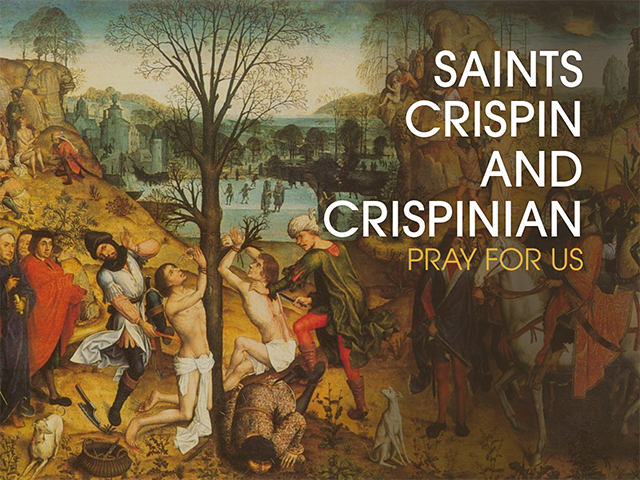



Sts. Crispin and Crispinian (d. 286 A.D.) were brothers, believed to be twins, from a noble Roman family. They were Christians and went as missionaries into Gaul (present-day France). Taking the Apostle St. Paul as their example, they earned their living through a trade, dividing their time between ministry and work. Their craft was shoe-making, and because they asked little pay for their shoes they were loved and esteemed by all. Crispin and Crispinian used their work as an opportunity to share the Christian faith with the pagans they encountered, and many were converted through their witness. During the persecution of the Roman Emperor Diocletian they were denounced as Christians and brought before the co-emperor, Maximanus Herculius. The emperor tried to persuade them to abandon their faith with promises and threats, but to no effect. The brothers were then given over to the governor who was notorious for his cruelty. They were stretched on the rack, their flesh was cut, and awls were driven under their fingernails. They were then thrown into a river with a millstone tied to their necks, but they both miraculously survived and swam back to shore. They were caught and finally beheaded. Crispin and Crispinian are the patron saints of shoemakers, saddlers, and tanners. Their feast, known as St. Crispin's Day, is October 25th.